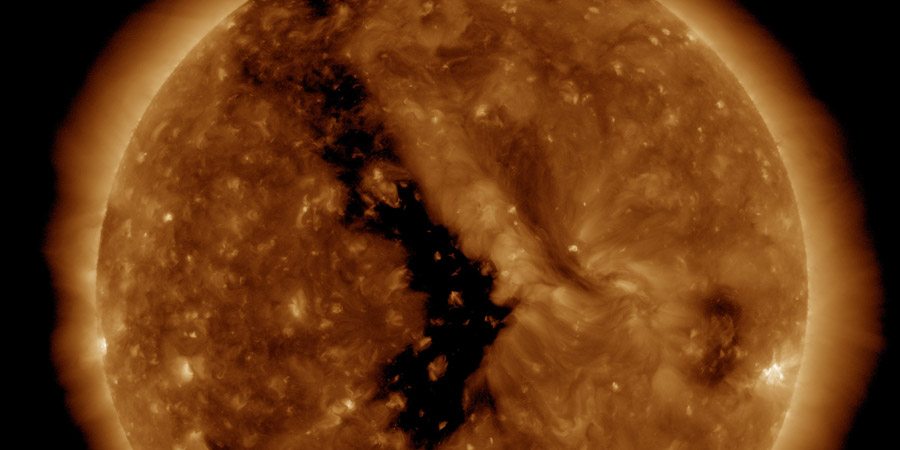Coronal hole faces Earth
Thursday, 4 October 2018 18:27 UTC

A large coronal hole is facing our planet today. This coronal hole seems to be an extension of the northern polar coronal hole that stretches southward all the way to the Sun's southern hemisphere.
Like always, our automated coronal hole detection system did its jobb and issued an alert which you might have received if you follow us on Twitter or have the SpaceWeatherLive app installed on your iOS or Android device.
A transequatorial coronal hole is facing Earth. Enhanced solar wind could arrive in ~3 days. Follow live on https://t.co/bsXLidnzGh pic.twitter.com/3Eyk2EvlYV
— SpaceWeatherLive (@_SpaceWeather_) October 4, 2018
This coronal hole has been present on the Sun for a while now and that means we can check how it has been developing. If we take a look at how this exact same coronal hole looked like during the previous solar rotation we notice something interesting. We can clearly see that this coronal hole has increased in size during the last 28 days. This is very interesting because last time around this coronal hole was responsible for a moderate G2 geomagnetic storm so there is reason to believe that this is possible again this time around.
We know what you are thinking, it increased in size so why not issue a warning for possible G3 conditions? Well, it is very rare for coronal holes to cause such strong storm conditions so it is unlikely that that's going to happen. Moderate G2 geomagnetic storm conditions would nonetheless be great news for high middle latitude sky watchers like northern England, Denmark, the northernmost parts of the United States, Victoria in Australia and most of New Zealand. This solar wind stream will likely take about two and a half to three days to travel the Sun-Earth distance which means the solar wind stream is likely to arrive this Sunday, 7 October. As mentioned, moderate G2 geomagnetic storm conditions will be possible on this date and perhaps early on Monday, 8 October.
Thank you for reading this article! Did you have any trouble with the technical terms used in this article? Our help section is the place to be where you can find in-depth articles, a FAQ and a list with common abbreviations. Still puzzled? Just post on our forum where we will help you the best we can!
Latest news
Latest forum messages
More topicsSupport SpaceWeatherLive.com!
A lot of people come to SpaceWeatherLive to follow the Sun's activity or if there is aurora to be seen, but with more traffic comes higher server costs. Consider a donation if you enjoy SpaceWeatherLive so we can keep the website online!

Space weather facts
| Last X-flare | 2025/03/28 | X1.1 |
| Last M-flare | 2025/04/01 | M2.4 |
| Last geomagnetic storm | 2025/03/27 | Kp5 (G1) |
| Spotless days | |
|---|---|
| Last spotless day | 2022/06/08 |
| Monthly mean Sunspot Number | |
|---|---|
| February 2025 | 154.6 +17.6 |
| April 2025 | 147 -7.6 |
| Last 30 days | 128.8 -21.8 |


